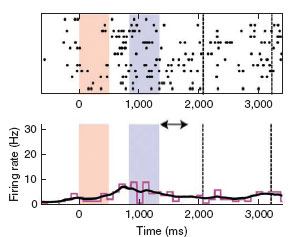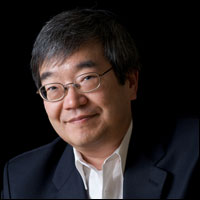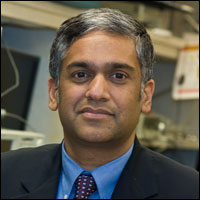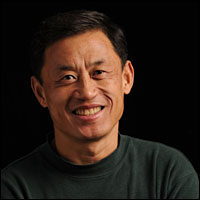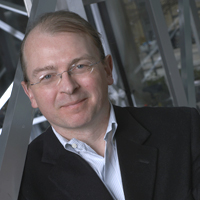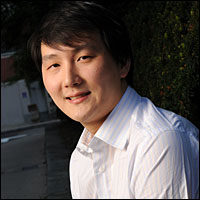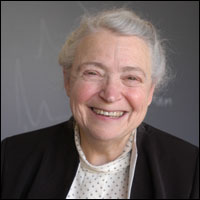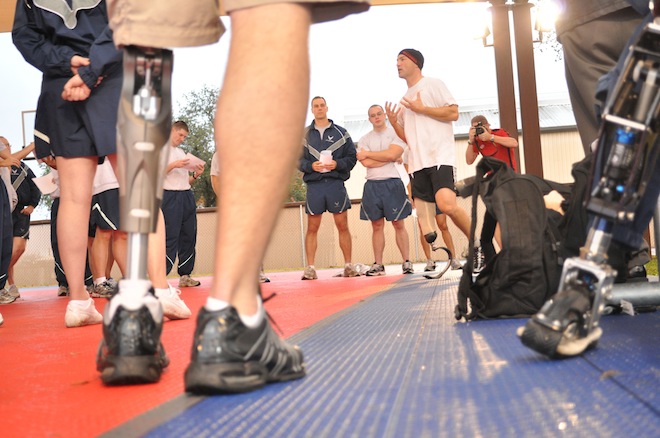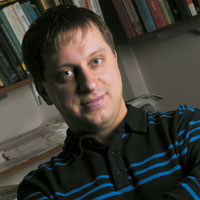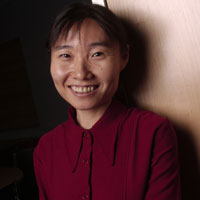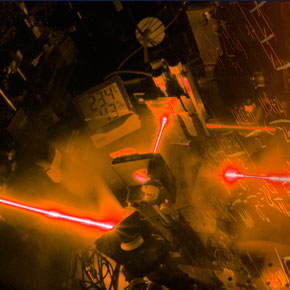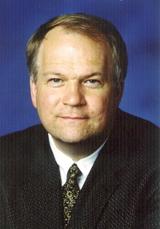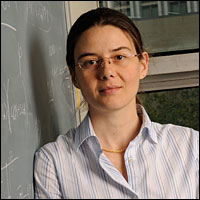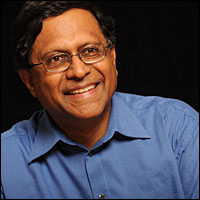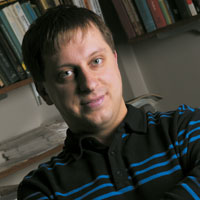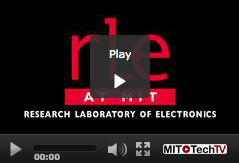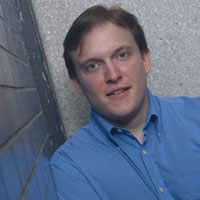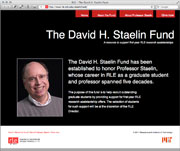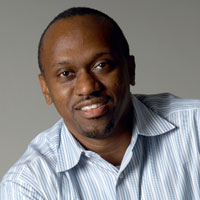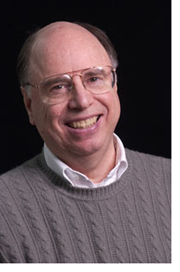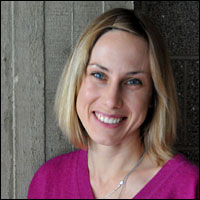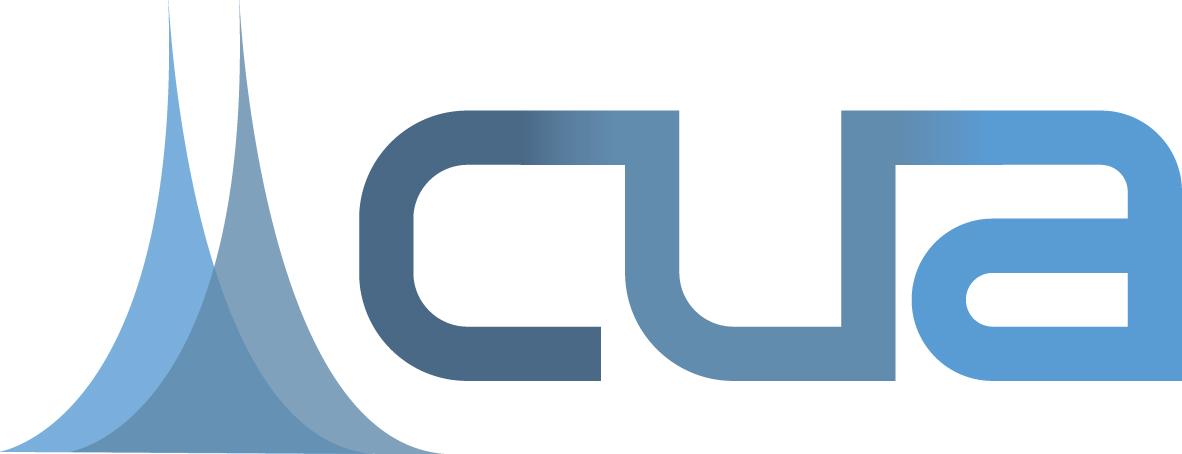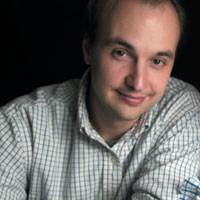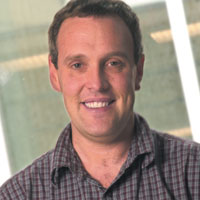RLE News
A one-way street for spinning atoms
Work correlating ultracold atoms spin with their direction of motion may help physicists model new circuit devices and unusual phases of matter. «more» Related Links: A one-way street for spinning atoms Professor Martin Zwierlein RLE Ultracold Quantum…
Wornell releases new paper: Neural population partitioning and a concurrent brain-machine interface for sequential motor function
Brain-machine interface (BMI) research has largely focused on the problem of restoring lost motor function in individuals. However, a more compelling aim of such research is the development of a truly “intelligent” BMI that can transcend original motor function by…
Medical devices powered by the ear itself
For the first time, researchers power an implantable electronic device using an electrical potential — a natural battery — deep in the inner ear. «more» Related Links: Medical devices powered by the ear itself Professor Anantha Chandrakasan RLE Digital…
RLE Professor Karl Berggren and his research group create artifact for television satellite
Eventually adding to the “graveyard in the sky,” new project by MIT Artist in Residence Trevor Paglen titled “The Last Pictures” will launch a television satellite into Earth’s orbit containing an ultra-archival disc of images to be broadcast for the next fifteen…
Rats Control Human Avatars
A team of engineers has set up a system that lets lab rats control a human-shaped avatar in a virtual environment, while humans control a rat-size robot inside the rat’s cage. The result? A six-foot human and a six-inch rat get to interact with each other remotely,…
A Bandwidth Breakthrough
A dash of algebra on wireless networks promises to boost bandwidth tenfold, without new infrastructure. «more» Related Links: A Bandwidth Breakthrough Professor Muriel Medard RLE Network Coding and Reliable Communications Group
What number is halfway between 1 and 9? Is it 5 — or 3?
A new information-theoretical model of human sensory perception and memory sheds light on some peculiarities of the nervous system. «more» Related Links: What number is halfway between 1 and 9? Is it 5 — or 3? Dr. Vivek Goyal RLE Signal Transformation…
Synapse Microarray Will Hold Neurons in Place
Treating Alzheimer’s with drugs that enhance synaptic strength «more» Related Links: Synapse Microarray Will Hold Neurons in Place Professor Mehmet Fatih Yanik RLE High-Throughput Neurotechnology Group
Fujimoto, Swanson awarded the 2012 António Champalimaud Vision Award
Share honor with colleagues for pioneering work in the development of optical coherence tomography. «more» Related Links: Fujimoto, Swanson awarded the 2012 António Champalimaud Vision Award Professor James G. Fujimoto RLE Optics and Quantum Electronics…
Explained: Femtoseconds and attoseconds
As electronic and optical devices get ever faster, terms for ever-smaller increments of time are coming into wider use.«more» Related Links: Explained: Femtoseconds and attoseconds Professor Franz X. Kaertner RLE Optics and Quantum Electronics…
How to clean up oil spills
IT researchers devise a surprisingly simple but effective method for magnetically separating oil and water. «more» Related Links: How to clean up oil spills Professor Markus Zahn RLE Continuum Electromechanics/High Voltage Group
Chandrakasan selected for 2013 IEEE Pederson Award in Solid-State Circuits
Professor Anantha Chandrakasan is cited for “pioneering techniques in low-power digital and analog CMOS design.” «more» Related Links: Chandrakasan selected for 2013 IEEE Pederson Award in Solid-State Circuits Professor Anantha Chandrakasan RLE Digital…
The impact of cells on electronics design
RLE Prof. Rahul Sarpeshkar talks about the possibilities. «more» Related Links: The impact of cells on electronics design Professor Rahul Sarpeshkar RLE Analog Circuits and Biological Systems Group
Hu awarded IEEE Photonics Society achievement award
Hu is cited “for pioneering contribution in the development of high-temperature, high-power, and broadly tunable THz QCLs, and applications in imaging and sensing.” «more» Related Links: Hu awarded IEEE Photonics Society achievement award Professor Qing…
Professor Seth Lloyd honored at QCMC 2012
On the evening of August 1st, 2012, RLE Professor Seth Lloyd received the Quantum Communication Award for Theoretical Research at the Eleventh International Conference on Quantum Communication, Measurement, and Computing (QCMC 2012), which was held the week of July…
Researchers build a toolbox for synthetic biology
Engineers design new proteins that can help control novel genetic circuits in cells. «more» Related Links: Researchers build a toolbox for synthetic biology Professor Timothy Lu RLE Synthetic Biology Group
Single-photon transmitter could enable new quantum devices
Long-sought goal for quantum devices — the ability to transmit single photons while blocking multiple photons — is finally achieved. «more» Related Links: Single-photon transmitter could enable new quantum devices Professor Vladan Vuletic RLE…
Five MIT researchers win presidential early career honors
RLE Prof. Timothy Lu among 96 winners. «more» Related Links: Five MIT researchers win presidential early career honors Professor Timothy Lu RLE Synthetic Biology Group
Dripping faucets inspire new way of creating structured particles
Researchers find new method for making spherical particles, from nanoscale to pinhead-sized — including complex beach-ball-like shapes. «more» Related Links: Dripping faucets inspire new way of creating structured particles Professor Yoel Fink RLE…
Research update: Chips with self-assembling rectangles
New technique allows production of complex microchip structures in one self-assembling step.«more» Related Links: Research update: Chips with self-assembling rectangles Professor Karl K. Berggren RLE Quantum Nanostructures and Nanofabrication…
Two RLE Researchers, Dr. Thomas Heldt And Dr. Kyung-Han Hong, Are Promoted To Principal Research Scientist
Cambridge, MA 07.17.2012 RLE is pleased to announce the promotions of Dr. Thomas Heldt and Dr. Kyung-Han Hong, effective July 1, 2012, to the position of Principal Research Scientist. Dr. Heldt is a member of Professor George Verghese’s Computational Physiology and…
New chip captures power from multiple sources
System developed at MIT could combine power harvested from light, heat and vibrations to run monitoring systems. «more» Related Links: New chip captures power from multiple sources Professor Anantha Chandrakasan RLE Digital Integrated Circuits and…
Researchers explain how dye-based nanotubes can help harvest light’s energy
Tiny cylinders help reveal how natural-light-harvesting antennae collect light with exceptional efficiency. «more» Related Links: Researchers explain how dye-based nanotubes can help harvest light’s energy RLE MIT-Harvard Center for Excitonics
A new approach to water desalination
Graphene sheets with precisely controlled pores have potential to purify water more efficiently than existing methods. «more» Related Links: A new approach to water desalination Professor Jeffrey Grossman Grossman Group
Carbon Catalyst for Half a Century
The New York Times has a conversation with Mildred Dresselhaus, profiling her lengthy career. «more» Related Links: Carbon Catalyst for Half a Century Professor Mildred Dresselhaus
Fujimoto is selected as Elihu Thomson chair holder
James Fujimoto has been appointed as the Elihu Thomson Professor of Electrical Engineering for a five-year term from July 1, 2012 to June 30, 2017. «more» Related Links: Fujimoto is selected as Elihu Thomson chair holder Professor James G. Fujimoto RLE…
Pentagon’s Prosthetic Plan: Tap Spinal Fluid to Fuel Fake Limbs
The prostheses of the future will be powered by spinal fluid. At least that’s the idea of one group of MIT researchers, who are working with Pentagon funding to create fluid, lifelike, neurally mediated prosthetic limbs. « more » Related Links:…
New energy source for future medical implants: sugar
Implantable fuel cell built at MIT could power neural prosthetics that help patients regain control of limbs.«more» Related Links: New energy source for future medical implants: sugar Professor Rahul Sarpeshkar RLE Analog Circuits and Biological Systems…
Teaching self-assembling structures a new trick
MIT researchers produce 3‑D configurations that could lead to new microchips and other devices. «more» Related Links: Teaching self-assembling structures a new trick Professor Karl K. Berggren RLE Quantum Nanostructures and Nanofabrication…
A 3‑month-old gets quantum mechanics — and you don’t
Bizarre rules that govern the behavior of elementary particles quite confounding. «more» Related Links: A 3‑month-old gets quantum mechanics — and you don’t Professor Seth Lloyd RLE Quantum Information Group
Madrid-MIT Consortium holds international conference in Madrid
Interdisciplinary dialogue among global leaders focuses on developing strong biomedical innovation ecosystems.«more» Related Links: Madrid-MIT Consortium holds international conference in Madrid Madrid–MIT M+Visión Consortium Professor Martha Gray…
Dresselhaus, Graybiel, Luu receive 2012 Kavli Prizes
Biennial prizes in astrophysics, nanoscience and neuroscience include a $1 million cash award in each field. «more» Related Links: Dresselhaus, Graybiel, Luu receive 2012 Kavli Prizes Professor Mildred Dresselhaus
Q&A, Marie-José Montpetit, MIT research scientist and social TV maven
One of her interests is social TV—using technology to connect disparate viewers—which Montpetit was thinking about well before it became a hot topic. «more» Related Links: Q&A, Marie-José Montpetit, MIT research scientist and social TV maven RLE…
The elusive capacity of networks
Calculating the total capacity of a data network is a notoriously difficult problem, but information theorists are beginning to make some headway. «more» Related Links: The elusive capacity of networks Professor Muriel Medard RLE Network Coding and…
A physicist and an inventor
New technologies from Marin Soljacic’s lab could have a far-reaching impact on daily life. «more» Related Links: A physicist and an inventor Professor Marin Soljacic RLE ab initio Physics Group
Dresselhaus receives Fermi Award
Honored by Obama, Chu at ceremony in Washington. «more» Related Links: Dresselhaus Receives Fermi Award Professor Mildred Dresselhaus RLE MGM Group
In search of new ways of producing nano-materials
Kong’s research focuses on how to make and control novel forms of thin-film carbon. «more» Related Links: In search of new ways of producing nano-materials Professor Jing Kong RLE Nano-Materials and Electronics Group
Course 6 develops new “Super” UROPs
Students can commit to year-long research project and earn certificate. «more» Related Links: Course 6 develops new “Super” project MIT Department of Electrical Engineering and Computer Science
US Scientists Who Mean Business
Timothy Lu is an accidental businessman. Having studied medicine, he initially set out to do scientific research. «more» Related Links: US Scientists Who Mean Business Professor Timothy Lu RLE Synthetic Biology Group
Yen-Fu Cheng is named recipient of 2012 Helen Carr Peake Research Prize
CAMBRIDGE, MA. 05.04.2012 The winner of the 2012 Helen Carr Peake Research Assistantship is Mr. Yen-fu Cheng. A doctoral student, Mr. Chen has won Peake recognition as a result of outstanding research in stem cell biology and engineering. Mr. Cheng is supervised by…
Microfluidic device designed to cleanse blood
A team of researchers from the Massachusetts Institute of Technology and the National University of Singapore have put a process to work in a microfluidic device that could be used to cleanse the blood, perhaps acting as a treatment for bacteria-related blood…
Keith Winstein and Faraz Najafi named recipients of 2012 Claude E. Shannon Research Assistantships
CAMBRIDGE, MA. 04.27.2012 The Research Laboratory of Electronics (RLE) at the Massachusetts Institute of Technology (MIT) is pleased to announce that the 2012 Claude E. Shannon Research Assistantships are being awarded to Mr. Keith Winstein and Mr. Faraz Najafi, who…
The Quantum Information Science and Technology Laboratory (QISTL) opens for lab tours
The Quantum Information Science and Technology Laboratory (QISTL), a key component of the NSF’s Interdisciplinary Quantum Information Science and Engineering (iQuISE) graduate training program at MIT, opened this April for lab tours and hands-on lab visits. Located in…
New material shares many of graphene’s unusual properties
Thin films of bismuth-antimony have potential for new semiconductor chips, thermoelectric devices. «more» Related Links: New material shares many of graphene’s unusual properties Professor Mildred Dresselhaus RLE MGM Group
RLE Staff Members David Foss, Nan Lin and Krista Van Guilder named recipients of the 2012 MIT Infinite Mile Award
The Office of the Provost and the Office of the Vice President and Dean for Research announced on Thursday, April 19 that three RLE professional staff, David Foss, Assistant Director for Information Technology Services; Nan Lin, Senior Fiscal Officer; and Krista Van…
Clarice Aiello: Finding quantum gold in diamond’s defect
Finding quantum gold in diamond’s defect «more» Related Links: Clarice Aiello: Finding quantum gold in diamond’s defect RLE Quantum Engineering Group
Their own devices
MIT’s Medical Electronic Device Realization Center aims to connect microelectronics with new health-care tools. «more» Related Links: Their own devices Professor Joel Voldman RLE Biological Microtechnology and BioMEMS Group
Anisotropic Dirac cones for next-generation electronics
RLE Professor Mildred Dresselhaus and her group explain their unexpected results. «more» Related Links: Anisotropic Dirac cones for next-generation electronics Professor Mildred Dresselhaus RLE MGM Group
Sensing when the brain is under pressure
New monitoring strategy forgoes surgery, could help doctors treat patients with head injuries. «more» Related Links: Sensing when the brain is under pressure Professor George Verghese RLE Computational Physiology and Clinical Inference Group
Chips as mini Internets
The data-routing techniques that undergird the Internet could increase the efficiency of multicore chips while lowering their power requirements. «more» Related Links: Chips as mini Internets Professor Anantha Chandrakasan RLE Digital Integrated Circuits…
Quantum biology: Physics tricks from microbes, slime and flies
Quantum physics is a bizarre world where very small particles can be in two places at once and can pass through barriers that should be impenetrable. «more» Related Links: Quantum biology: Physics tricks from microbes, slime and flies Professor Seth…
Science Fiction or Fact: Is Time Travel Possible?
RLE Professor Seth Lloyd weighs in on the subject «more» Related Links: Science Fiction or Fact: Is Time Travel Possible? Professor Seth Lloyd RLE Quantum Information Group
Atomic physics: An almost lightless laser
Lasers are often described in terms of a light field circulating in an optical resonator system. Now a laser has been demonstrated in which the field resides primarily in the atomic medium that is used to generate the light. «more» Related Links: Atomic…
How to corner the MEMS market
Government investment in the manufacture of micromachines could pay huge dividends, but in the meantime, MIT researchers are developing new fabrication techniques. «more» Related Links: How to corner the MEMS market RLE NanoStructures Laboratory RLE…
MIT developing rechargeable glucose cells
Rahul Sarpeshkar is working to cultivate the use of glucose cells and several other innovations which can be used to propel biomedical devices like pacemakers and cochlear implants. «more» Related Links: MIT developing rechargeable glucose cells…
A True Bionic Limb Remains Far Out of Reach
RLE Professor Rahul Sarpeshkar comments on the challenges still facing today’s prosthetic experts «more» Related Links: A True Bionic Limb Remains Far Out of Reach Professor Rahul Sarpeshkar RLE Analog Circuits and Biological Systems Group
Fiber laser points to woven 3‑D displays
A fiber that can emit light along its length in any direction may herald flexible 3‑D displays and medical tools that activate therapeutic compounds with bursts of light. «more» Related Links: Fiber laser points to woven 3‑D displays Professor Yoel Fink…
Automatic Recharging, From a Distance
THINK how convenient it would be if you could recharge electronic devices without ever having to plug them in — or even take them out of your briefcase. «more» Related Links: Automatic Recharging, From a Distance Professor Marin Soljacic RLE ab initio…
New initiatives in graduate education at MIT
MIT Dean for Graduate Education Christine Ortiz announced on Feb. 17 that faculty, students and staff from across the Institute are coming together to advance three important topics in graduate education. «more» Related Links: New initiatives in graduate…
TR50 selects WiTricity as one of 50 most innovative companies in 2012
RLE Professor Marin Soljacic’s company WiTricity selected as one of Technology Review’s 50 Most Innovative Companies in 2012. «more» Related Links: TR50: The 50 Most Innovative Companies in 2012 Professor Marin Soljacic RLE ab initio Physics…
Prof. Joseph A. Izatt to deliver the 2012 Hermann Anton Haus Lecture: Lecture series honoring Haus brings eminent visitors to MIT
Professor Joseph A. Izatt, a Professor of Biomedical Engineering at Duke’s Pratt School of Engineering will deliver the 2012 Hermann Anton Haus Lecture Wednesday, April 25, 2012, 4:00 pm in the RLE conference facility, 36–428-462. A reception will follow the lecture.…
Paola Cappellaro wins AFOSR Young Investigator Award
Department of Nuclear Science and Engineering assistant professor is investigating a bottom-up approach to quantum information devices. «more» Related Links: Paola Cappellaro wins AFOSR Young Investigator Award Professor Paola Cappellaro RLE Quantum…
Microchips’ optical future
To keep energy consumption under control, future chips may need to move data using light instead of electricity — and the technical expertise to build them may reside in the United States. «more» Related Links: Microchips’ optical future Professor…
The blind codemaker
New error-correcting codes guarantee the fastest possible rate of data transmission, even over fluctuating wireless links.«more» Related Links: The blind codemaker Professor Gregory Wornell RLE Signals, Information, and Algorithms Group
Charge Your Phone (and Your Car) from Afar
Charging systems that send power farther through the air will soon be on sale. «more» Related Links: Charge Your Phone (and Your Car) from Afar Professor Marin Soljacic RLE ab initio Physics Group
Verghese named Henry Ellis Warren Professor of Electrical Engineering
The chair is designated for “interdisciplinary research leading to application of technological developments in electrical engineering and computer science, with their effect on human ecology, health, community life, and opportunities for youth”.«more»…
Turning heat into power
A new kind of high-temperature photonic crystal could someday power everything from smartphones to spacecraft. «more» Related Links: Turning heat into power Prof. John Joannopoulos Prof. Marin Soljacic RLE ab initio Physics Group
RLE Professor Timothy Lu awarded Doherty Professorship
Assistant Professor Timothy Lu has been awarded this year’s Henry L. and Grace Doherty Professorship in Ocean Utilization. The faculty appointment is for two years beginning this July and provides an annual budget of $25,000 to support Lu’s work on his proposed…
Computers Going Wild?
Computers Gone Wild: Impact and Implications of Developments in Artificial Intelligence on Society was an informal discussion that took place at Harvard Law School on December 8th, 2011. «more» Related Links: Computers Going Wild? Professor Marin…
Three RLE films recognized for outstanding digital communication
The Research Laboratory of Electronics at MIT has engaged Greg Hren Photography to complete a series of films highlighting the lab’s Principal Investigators and their research at RLE and MIT. Three of these recent RLE films have been recognized by the AVA awards—a…
Watching a gas turn superfluid
New work on ultracold gases may also help scientists understand high-temperature superconductors and neutron stars. «more» Related Links: Watching a gas turn superfluid Professor Martin Zwierlein RLE Ultracold Quantum Gases Group MIT-Harvard Center for…
RLE PI Paola Cappellaro selected as AFOSR Young Investigator Award recipient
RLE PI Paola Cappellaro selected as AFOSR Young Investigator Award recipient «more» Related Links: RLE PI Paola Cappellaro selected as AFOSR Young Investigator Award recipient Professor Paola Cappellaro RLE Quantum Engineering Group
President Obama Names MIT Scientist Mildred Dresselhaus a Winner of the Enrico Fermi Award
The Research Lab of Electronic is delighted to announce that MIT Institute and RLE Principal investigator, Professor Mildred S. Dresselhaus has been named by President Obama a recipient of the Enrico Fermi Award. One of the government’s oldest and most prestigious…
Obama honors Mildred Dresselhaus with Fermi Award
MIT scientist shares one of the U.S. government’s most prestigious awards for scientific achievement with alumnus Burton Richter. «more» Related Links: Obama honors Mildred Dresselhaus with Fermi Award Professor Mildred Dresselhaus
3‑D cameras for cellphones
Clever math could enable a high-quality 3‑D camera so simple, cheap and power-efficient that it could be incorporated into handheld devices. «more» Related Links: 3‑D cameras for cellphones Professor Vivek Goyal RLE Signal Transformation and Information…
RLE Welcomes Principal Investigator Mildred Dresselhaus
Institute Professor has led studies gaining a fundamental understanding of the electronic structure of novel materials systems and is a leader in promoting opportunities for women in science and engineering RLE extends a warm welcome to Mildred Dresselhaus who, as a…
Two new members join the RLE Headquarters staff
The Research Laboratory of Electronics is pleased to announce that Rita Patel and Erik Kloppenburg have joined the headquarters staff. Rita Patel joined RLE as a fiscal officer on December 1st. She will be supporting a number of PI’s for pre-award, and a handful for…
Research update: Sharpening the lines
New advance could lead to even smaller features in the constant quest for more compact, faster microchips. «more» Related Links: Research update: Sharpening the lines Professor Vladimir Bulovic Organic and Nanostructured Electronics Lab
A glow of recognition
New detectors developed at MIT could provide easy visual identification of toxins or pathogens. «more» Related Links: A glow of recognition RLE Center for Excitonics
The David H. Staelin Fund is established
Dear Colleagues: As you know by now, our mutual friend and colleague, Dave Staelin, passed away of cancer on November 10. We will miss him dearly. As described in MIT’s remembrance of him, Dave dedicated his long career to basic science, technology development,…
A novel way to concentrate the sun’s heat
MIT researchers find a way to generate power without the usual mirror arrays.«more» Related Links: A novel way to concentrate sun’s heat Professor John Joannopoulos Professor Marin Soljacic RLE Ab Initio Physics Group
Double Duty: MIT professor and cardiologist Collin Stultz combines computational biology and medicine
A computational biologist and physician, Collin Stultz takes a unique approach to studying diseases that could lead to new treatments. «more» Related Links: Double Duty Professor Collin M. Stultz RLE Computational Biophysics Group
David Staelin, longtime professor in EECS and RLE, dies at 73
Researcher led a career distinguished by abundant accomplishments, widespread impact in his 55 years at MIT.«more» Related Links: David Staelin, longtime professor in EECS and RLE, dies at 73 David H. Staelin Fund
Remembering David H. Staelin, 1938–2011
MIT Professor David H. Staelin, member of the department of Electrical Engineering and Computer Science, and the Research Laboratory of Electronics, passed away Nov. 10, 2011 of cancer, he was 73 years old. Driven by a deeply felt sense of responsibility to MIT, the…
Madrid-MIT M+Vision Consortium convenes inaugural Boston open house
More than 130 attendees representing 40-plus institutions from Spain and the United States converged in Boston for the Madrid-MIT M+Visión Consortium’s inaugural open house, the Consortium’s first Boston-based event.«more» Related Links: Madrid-MIT…
New algorithm could substantially speed up MRI scans
Faster scans could reduce the time patients spend in the machine from 45 to 15 minutes. «more» Related Links: New algorithm could substantially speed up MRI scans Professor Elfar Adalsteinsson Professor Vivek K Goyal RLE Magnetic Resonance Imaging Group…
Charging toward better neural implants
Researchers improve the efficiency of devices that stimulate damaged nerves, reducing potential side effects. «more» Related Links: Charging toward better neural implants Professor Jongyoon Han RLE Micro/Nanofluidic BioMEMS Group
Connecting neurons to fix the brain
New technology helps scientists discover drugs to strengthen synapses. «more» Related Links: Connecting neurons to fix the brain Professor Mehmet Fatih Yanik RLE High-Throughput Neurotechnology Group
RLE welcomes Principal Investigator Polina O. Anikeeva
AMAX Assistant Professor of Materials Science and Engineering studies potential new devices to provide treatment for neural disorders RLE welcomes Assistant Professor Polina O. Anikeeva who has recently joined the Research Laboratory of Electronics. Prof. Anikeeva’s…
Computer science gives a boost to heart health
New technique searches for subtle indicators of risk hidden in a patient’s EKG. «more» Related Links: Computer science gives a boost to heart health Professor Collin M. Stultz RLE Computational Biophysics Group
Center for Ultracold Atoms NSF Grant Renewed for Five Years
Effective September 1, 2011, the NSF grant supporting the Center for Ultracold Atoms has been renewed for five more years, taking the Center into its 12th year of ongoing work, in collaboration with Harvard, in the discovery of how natural and artificial materials…
Bulovic named director of the Microsystems Technology Laboratories
Vladimir Bulovic, professor of electrical engineering and a MacVicar Faculty Fellow, has been named director of MIT’s Microsystems Technology Laboratories (MTL). He will assume the position Oct. 1, replacing Anantha Chandrakasan.«more» Related Links:…
Mimicking cells with transistors
Analog — rather than digital — circuits could enable models of biological systems that are more efficient, more accurate and easier to build. «more» Related Links: Mimicking cells with transistors Professor Rahul Sarpeshkar RLE Analog Circuits and…
Five from MIT win NIH grants
Grants support biomedical research that will ‘challenge the status quo’ with risk-taking, innovative ideas. «more» Related Links: EECS Announcement Five from MIT win NIH grants Professor Mehmet Fatih Yanik Professor Timothy Lu
CUA researchers present invited talks at the Bose-Einstein Condensation conference in Sant Feliu, Spain
The most prestigious conference on atomic quantum gases is the bi-annual meeting on “Bose-Einstein Condensation — Frontiers in Quantum Gases,” which is taking place in San Feliu de Guixols, Costa Brava, Spain, September 10–16, 2011. Among the 47 invited speakers are…
Quantum computing with light
A switch that lets one photon alter the quantum state of another could point the way to both practical quantum computers and a quantum Internet. «more» Related Links: Quantum computing with light MIT–Harvard Center for Ultracold Atoms
Building chips from collapsing nanopillars
By turning a common problem in chip manufacture into an advantage, MIT researchers produce structures only 30 atoms wide. «more» Related Links: Building chips from collapsing nanopillars Professor Karl K. Berggren RLE Quantum Nanostructures and…
Movies of Electrons
Lasers that emit pulses lasting a quintillionth of a second could characterize the behavior of individual electrons during chemical reactions. «more» Related Links: Movies of electrons Professor Franz X. Kärtner RLE Optics and Quantum Electronics…
Fink named RLE director
Succeeds Shapiro to lead one of the Institute’s oldest interdepartmental labs. «more» Related Links: Fink named RLE director Professor Yoel Fink RLE Photonic Bandgap Fibers and Devices Group
New Director of RLE Announced
TO: All members of the RLE Community FROM: Claude R. Canizares DATE: August 8, 2011 SUBJECT: New Director of RLE I am very pleased to announce that Professor Yoel Fink will serve as the next Director of Research Laboratory of Electronics, effective September 1, 2011.…


